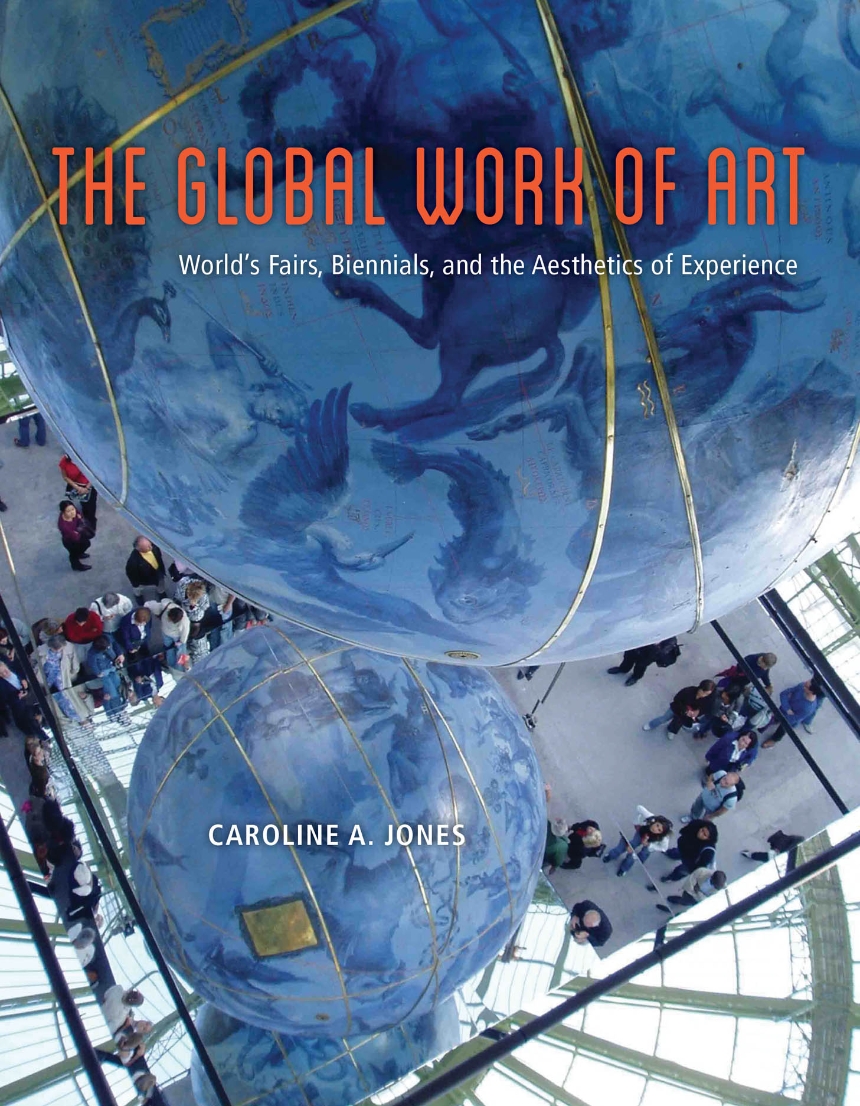The Global Work of Art
World’s Fairs, Biennials, and the Aesthetics of Experience
9780226291741
9780226291888
The Global Work of Art
World’s Fairs, Biennials, and the Aesthetics of Experience
Global biennials have proliferated in the contemporary art world, but artists’ engagement with large-scale international exhibitions has a much longer history that has influenced the present in important ways. Going back to the earliest world’s fairs in the nineteenth century, this book argues that “globalism” was incubated in a century of international art contests and today constitutes an important tactic for artists.
As world’s fairs brought millions of attendees into contact with foreign cultures, products, and processes, artworks became juxtaposed in a “theater of nations,” which challenged artists and critics to think outside their local academies. From Gustave Courbet’s rebel pavilion near the official art exhibit at the 1855 French World’s Fair to curator Beryl Madra’s choice of London-based Cypriot Hussein Chalayan for the off-site Turkish pavilion at the 2006 Venice Biennale, artists have used these exhibitions to reflect on contemporary art, speak to their own governments back home, and challenge the wider geopolitical realm—changing art and art history along the way. Ultimately, Caroline A. Jones argues, the modern appetite for experience and event structures, which were cultivated around the art at these earlier expositions, have now come to constitute contemporary art itself, producing encounters that transform the public and force us to reflect critically on the global condition.
As world’s fairs brought millions of attendees into contact with foreign cultures, products, and processes, artworks became juxtaposed in a “theater of nations,” which challenged artists and critics to think outside their local academies. From Gustave Courbet’s rebel pavilion near the official art exhibit at the 1855 French World’s Fair to curator Beryl Madra’s choice of London-based Cypriot Hussein Chalayan for the off-site Turkish pavilion at the 2006 Venice Biennale, artists have used these exhibitions to reflect on contemporary art, speak to their own governments back home, and challenge the wider geopolitical realm—changing art and art history along the way. Ultimately, Caroline A. Jones argues, the modern appetite for experience and event structures, which were cultivated around the art at these earlier expositions, have now come to constitute contemporary art itself, producing encounters that transform the public and force us to reflect critically on the global condition.
400 pages | 37 color plates, 128 halftones | 8 1/2 x 11 | © 2017
Art: Art Criticism, Art--General Studies
Travel and Tourism: Tourism and History
Reviews
Table of Contents
Preface
1 The Blindman; or, How to Visit a World Exhibition
Blind Epistemology
Objects and Encyclopedics
Universal Object Lessons
Sensory Alternatives
Objects and Encyclopedics
Universal Object Lessons
Sensory Alternatives
2 Desires for the World Picture
Desires
Ars et Feriae
Publics, Infrastructures, Discourse
Objects of Art/Difference
Art in the Age of Its Touristic Reproduction
Architectures and Endings
Ars et Feriae
Publics, Infrastructures, Discourse
Objects of Art/Difference
Art in the Age of Its Touristic Reproduction
Architectures and Endings
3 Old World/Biennial Culture
Old Beginnings in Venice
Repetition and Difference
Subjects, Nations, Artists
Biennial Culture
Repetition and Difference
Subjects, Nations, Artists
Biennial Culture
4 New World/Cold War
Hemispheric Rearrangements
Arte Moderna
Difference and Repetition
From Museum to Bienal
Plastic Revolutions
Modulor Moderns
Arte Moderna
Difference and Repetition
From Museum to Bienal
Plastic Revolutions
Modulor Moderns
5 Transnational Openings
Tactics of the Trans
Unities/the Differend
When Attitudes Became Norms
Incorporations
Unities/the Differend
When Attitudes Became Norms
Incorporations
6 The Aesthetics of Experience
Tropes of Experience
Encounters and Emblems
Expérience, Erfahrung, and the Experience of Event
Economimesis at the Fair
Encounters and Emblems
Expérience, Erfahrung, and the Experience of Event
Economimesis at the Fair
7 Critical Globalism, in Practice
The Worldly Subject
Global Workings of Art
Practicing Critical Globalism
Global Workings of Art
Practicing Critical Globalism
Notes
Bibliography
Index
Bibliography
Index
